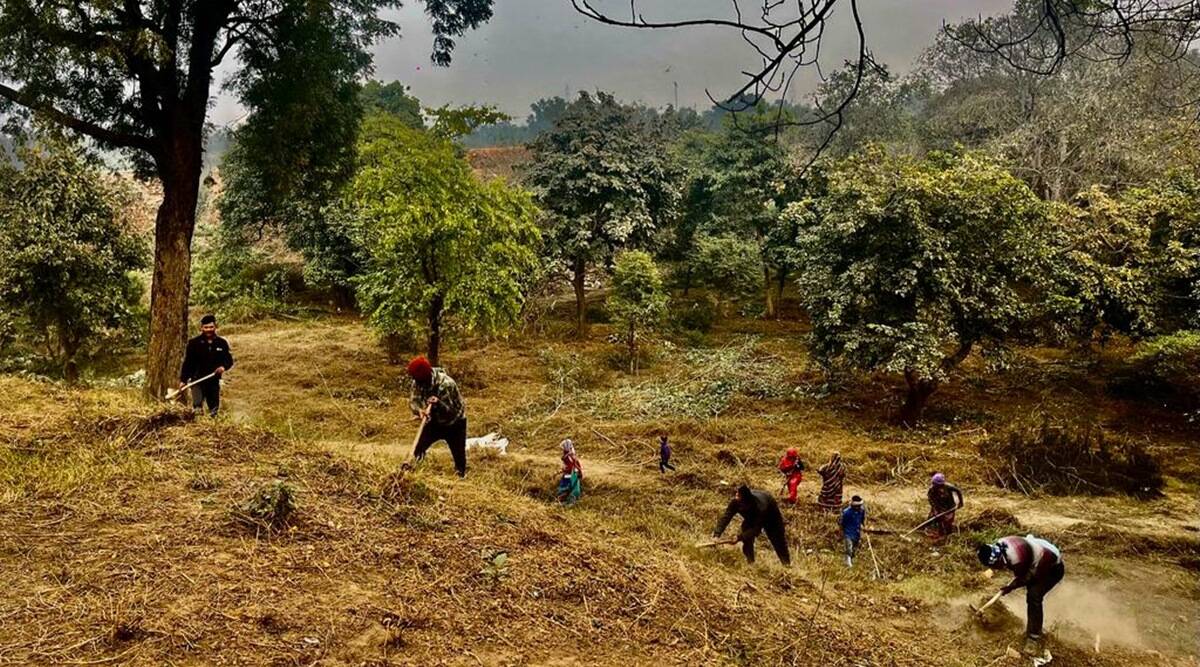Purana Qila’s history trail for G20 guests traverses 2,500 years of strata.

DURING THE G20 Summit in September in Delhi, visiting participants will be transported back 2,500 years to the Purana Qila.
Currently, the Archaeological Survey of India (ASI) is transforming one of the excavated trenches at the site into a place where tourists may observe “a continuous occupancy of 2,500 years,” according to the agency.
The excavated trench reveals traces of the pre-Mauryan period (6th to 4th century BC) at a depth of eight metres, and as one ascends, the soil layers reveal cultural deposits of the various Delhi kingdoms that existed before the Mughals: the Mauryan empire, the Shungas, the Kushanas, and the Rajputs. The ground level, according to the ASI, represents the Mughal period.
“Because of its proximity to the Yamuna river, the Purana Qila has been a significant hub for trade and industry throughout the Mauryan, Shunga, Kushana, Rajput, and Mughal periods. In the most recent excavation, we also discovered terracotta, beads, figurines, and coins belonging to these dynasties,” said Vasant Swarnkar, director of conservation at the Archaeological Survey of India (ASI) and the organization’s spokesperson, adding that it is the only place in Delhi with cultural deposits from the last 2,500 years. Dholavira in Gujarat is another location in the country that demonstrates cultural continuity over the millennia, but the topography there is significantly different, he said.

The exposure and preservation of these trenches, which were excavated in 2013-2015 and 2017-2018, according to ASI authorities, is for the benefit of tourists and academics. “The vast investigation is being conducted at the request of Union Culture Minister G Kishan Reddy in order to investigate Indian culture as described in ancient literary writings,” stated Swarnkar.
Purana Qila provides archaeological evidence that there were at least six empires in Delhi prior to the arrival of the Mughals, proving that Delhi is older than is commonly assumed.
Swarnkar told Deccan Era that the goal is to complete the project within the next three months so that it may be visited by G20 delegates in September.
The 4015 metre trench area will be covered with a shed, and walkways and pathways will be constructed so that visitors may witness all the layers of history, beginning with the pre-Mauryan period and ending with the Mughal Empire. Sher Shah Suri is said to have constructed the current Purana Qila citadel prior to his death in 1545.
Swarnkar stated, “The most recent excavations at Purana Qila, identified as the ancient city of Indraprastha, were done in 2013-14 and 2017-18, long after the excavations of B B Lal in 1969-1973.”
Under the mound, the first two rounds of excavations, conducted in 1954-55 and 1969-72 by the then ASI director B B Lal, uncovered signs of painted grey ware (PGW). At the time, Lal was on a mission to explore several sites described in the Mahabharata and claimed to have discovered these traces as a common trait at all of these sites.
Lal asserted that Purana Qila is the Pandava kingdom of Indraprastha, estimating 900 BCE as the time period of the war described in the epic on the basis of PGW, which archaeologically dates to the 12th-6th centuries BCE.
In fact, the ASI is conducting a second wave of excavations at the Purana Qila mounds in order to definitively uncover the earliest feasible layer of civilizational traces. The third season of excavation is also being managed by Swarnkar, who directed the previous two seasons as the Supervising Archaeologist for the ASI Delhi Circle. At the conclusion of the previous excavation season, evidence of pre-Mauryan layers was discovered.



